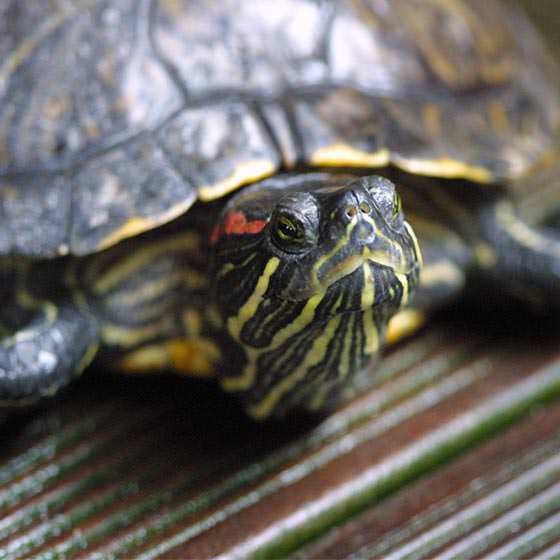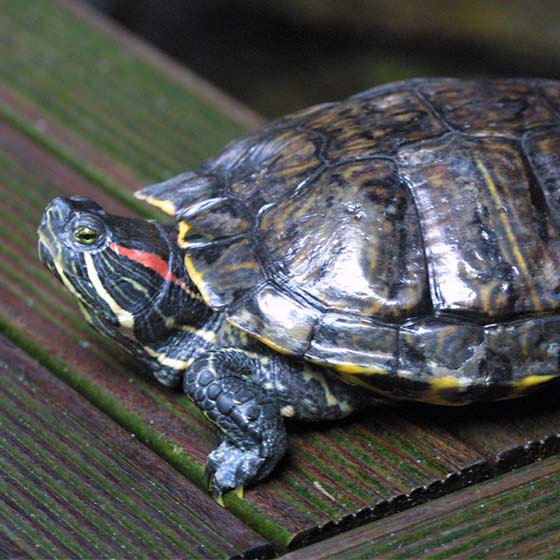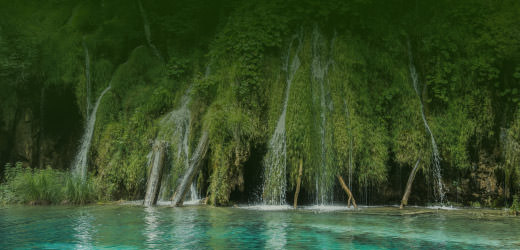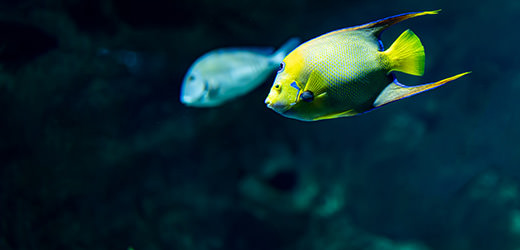Biology
The pond slider is called the ‘Florida turtle’ in French. Despite the fact that it comes from the Mississippi Basin, it owes that name to the fact that it was bred for commercial purposes at many farms in Florida and Louisiana.
It spends time in ponds, lakes and lazy rivers with dense vegetation. It typically lives in an aquatic environment, although it can also be found on land, in search of the sun.
This species is characterized by the red markings behind its eyes and the green and yellow lines on its head.
It is an omnivore with a highly varied diet. It feeds on fish, amphibians, tadpoles and various aquatic and land-based invertebrates: insects, earthworms, crayfish, snails, vegetables, fruits, seeds, and more.




